Thang Long Water Puppet Theatre: Hanoi’s Cultural Masterpiece
Among Vietnam’s most revered cultural sites is the Thang Long Water Puppet Theatre. The theatre presents daily water puppet shows, a medium of art with 11th-century origin. The theater now represents Vietnam’s commitment to safeguarding its rich legacy and enabling a worldwide audience to access it. Let MOTOGO Tours delve further into the history of this amazing location.
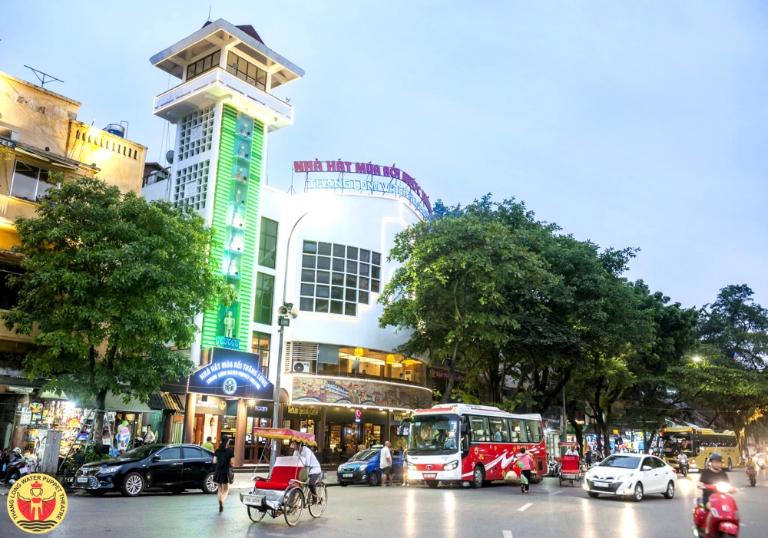
The Historical Roots of Water Puppetry
Puppy Water in Ancient Vietnam
From the 11th century, water puppetry—also known as múa rối nước—dances in Vietnamese—have been a skillful craft. It started in the remote Red River Delta rice terraces, where residents performed on water-filled fields. These events evolved into a celebration of holidays, a means of sharing folk stories, and a way for residents to honor gods over time, so becoming a pillar of Vietnamese life.

Water Puppetry’s Evolution throughout Time
Water puppetry started in rural Vietnam but finally found its way to cities and developed into a sophisticated artistic medium. Thang Long Water Puppet Theatre is among the rare remaining venues where this age-old custom is kept and celebrated in its whole glory nowadays. Thang Long distinguishes itself by its dedication to preserve the performances’ authenticity while still making them understandable for contemporary viewers.
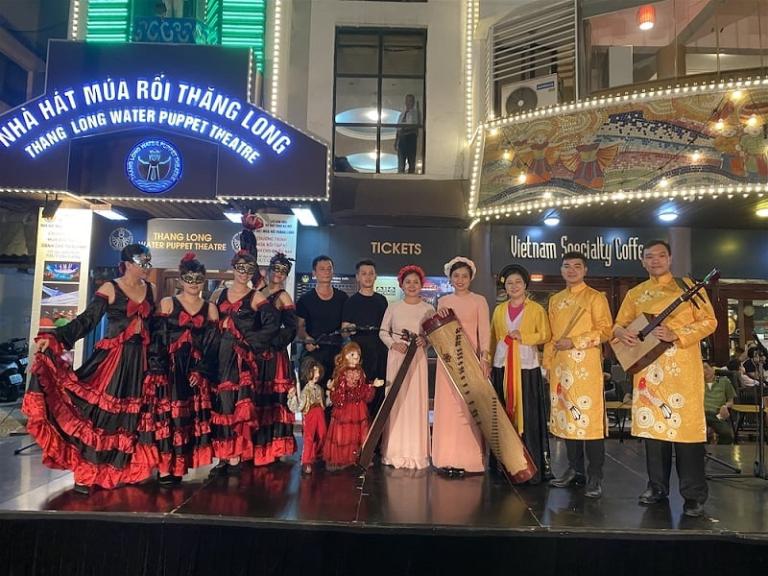
>>> Let’s see more: History of Hanoi: A Journey Through Vietnam’s Capital
Thang Long Water Puppet Theatre: Cultural Significance
Thang Long Water Puppet Theatre is not only a tourist destination in Hanoi, but it also helps greatly to preserve Vietnam’s rich cultural legacy. Generation after generation has passed on water puppetry as a kind of art; the theater has set its goal in maintaining these customs in the present period. The theatre acts as a living museum of Vietnamese folklore and narrative by presenting classic stories, costumes, and music.
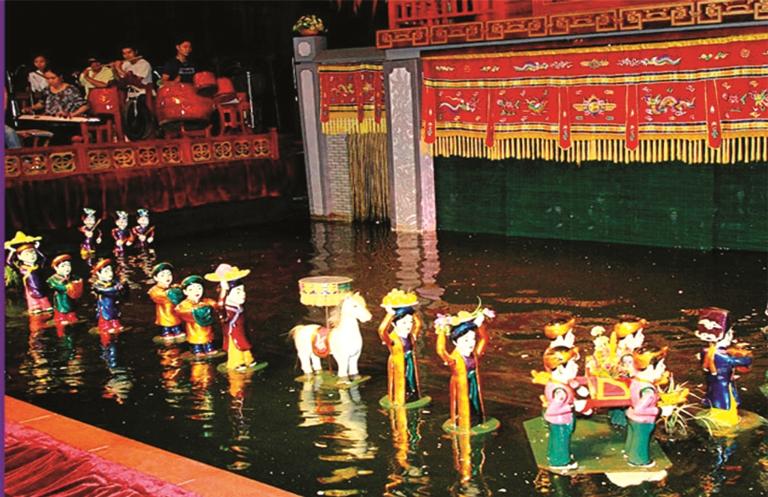
Apart from safeguarding traditional customs, Thang Long Water Puppet Theatre is a mainstay of Vietnamese travel. For many guests, the theater provides their first taste of the national culture. One of Hanoi’s most popular tourist destinations, the distinctive character of the shows attracts thousands of people annually. The theater not only provides entertainment value but also creatively instructs viewers on the history and customs of Vietnam.
How unique is Thang Long Water Puppet Theatre?
Customized Water Stage Configuration
Thang Long Water Puppet Theatre boasts a unique water stage among other things. Long rods and levers submerged beneath water control the puppets, creating the impression they are floating across the surface. The water itself is highly important for the performance; it represents anything from wide oceans to rivers and lakes. The show is mesmerizing for all ages because of the perfect interaction between the puppets and the water, which adds still another level of magic.
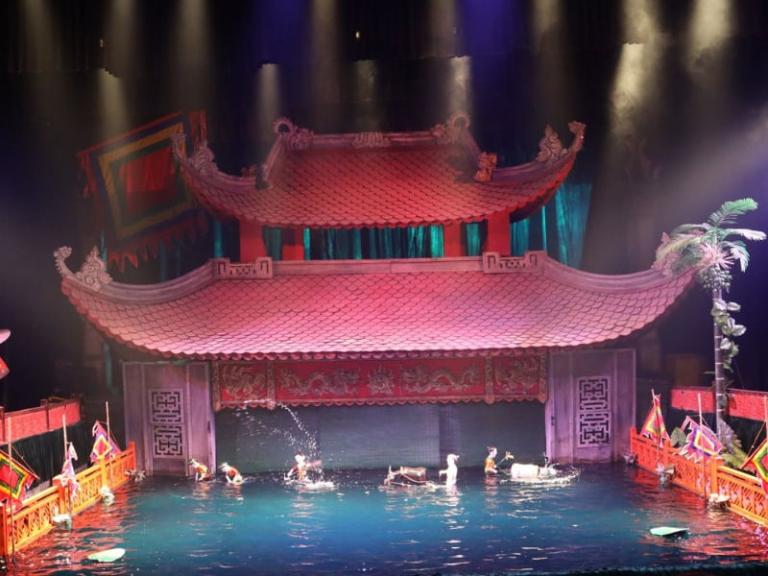
The Puppet Craftsmanship and Design
Skilled craftspeople create the puppets Thang Long Water Puppet Theatre uses. Each painstakingly painted, wooden puppet is a work of art unto itself. From naughty toddlers to strong dragons, the puppets’ faces mirror the characters they are meant to represent; the attention to detail is amazing. Their traditional clothes reflect this as well.
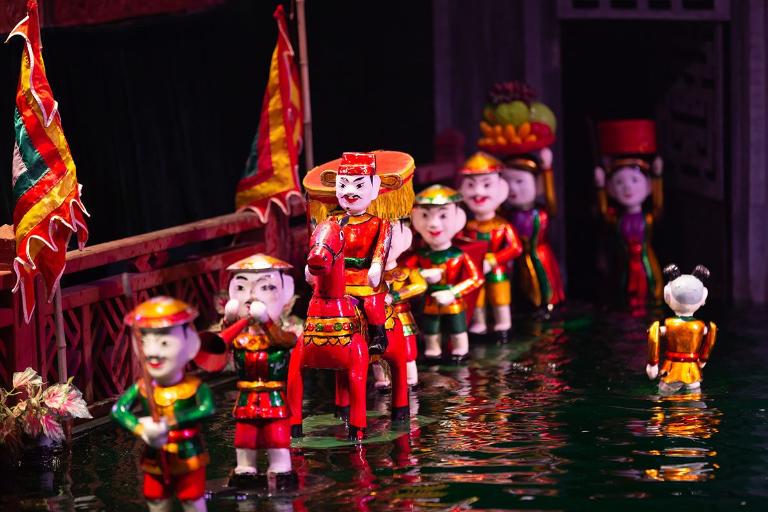
The Effects of Vietnamese Folklore
Thang Long Water Puppet Theatre presents stories firmly anchored in Vietnamese tradition. Popular characters like dragons, phoenixes, and farmers abound in tales of valor, love, and life in the countryside. Many of these tales have been handed down for millennia, preserving the folklore for next generations of viewers by means of relevance.
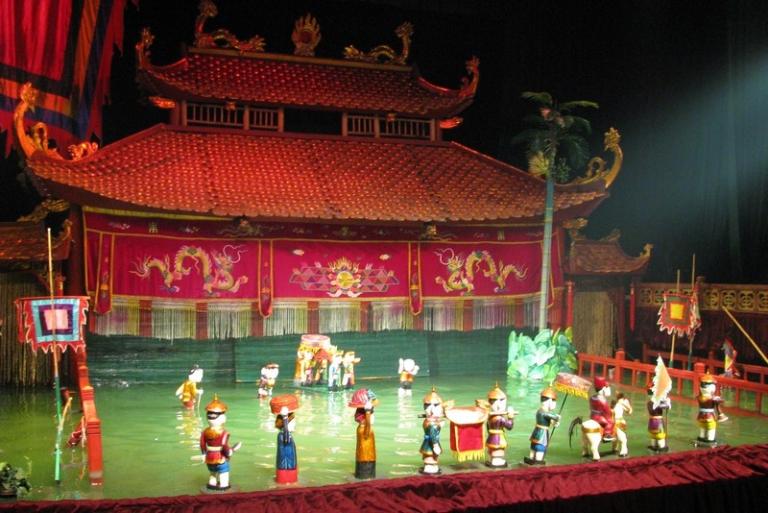
>>> Explore: Dong Xuan Market: Hanoi’s Vibrant Cultural and Shopping Hub
Examining the Performances at Water Puppet Theatre Thang Long
Thang Long Water Puppet Theatre’s performances are a wonderful trip into the core of Vietnamese culture. Every performance is a well chosen mix of visual creativity, music, and narrative that vividly brings traditional Vietnamese folklore to life.
Typical Stories from the Performances
Many of the Vietnamese mythology, folklore, and daily life that Thang Long Water Puppet Theatre depicts have been passed down for years. These stories frequently capture the strong link of the nation to spirituality, nature, and agriculture.

One well-known recurrent motif, for instance, is the legend of Le Loi, the 15th-century Vietnamese emperor allegedly endowed with a supernatural sword by the gods to drive out foreign invaders. The story goes that following Le Loi’s triumph, a massive golden turtle emerged in Hoan Kiem Lake to recover the sword on behalf of the gods, therefore signifying the end of the battle and the coming of peace.
Apart from heroic tales, numerous shows highlight the straightforward but colorful life of rural people from Vietnam. Scenes of daily life, including farmers planting rice, fishermen throwing nets, and colorful and joyful village celebrations, are presented to audiences. These vignettes provide a nostalgic view of conventional Vietnamese living, therefore enhancing the cultural illumination value of the performances.
Water Puppetry’s Instruments and Music
An indispensable component of the experience is the live orchestra accompanying the Thang Long Water Puppet Theatre presentations. Visible to the audience, the musicians on either side of the water stage perform traditional Vietnamese instruments that give the story being presented depth and passion.

Important instruments are the two-stringed lute with a moon-shaped body that offers a rhythmic basis and the monochord, đàn bầu, which generates ethereal, hauntingly beautiful tones. Dramatic sound effects created from the trống (drum) replicate thunder, waves, and galloping horses. These classic instruments accompany the activity on stage by means of vocals ranging from soft lullabies to loud festival tunes, therefore enhancing their resonance.
In certain shows, the musicians call out the puppets themselves as part of the narrative. This engenders a dynamic interaction among the musicians, puppeteers, and audience, therefore enveloping spectators in the universe of the performance.
Not far-off attractions to discover
Following a mesmerizing show at Thang Long Water Puppet Theatre, seize the chance to tour some of Hanoi’s surrounding sights, each providing a different window into the city’s rich legacy.
Hoan Kiem Lake
Just a short stroll away, Hoan Kiem Lake is a calm haven in the middle of Hanoi. Legend has it that Emperor Le Loi returning a miraculous sword to the Golden Turtle God named the lake after him. Wander the walkways around the lake to see the magnificent Turtle Tower and stop at Ngoc Son Temple, reachable with the arresting red The Huc Bridge. Particularly at sunset, the region is ideal for photojournalistic work and leisure.
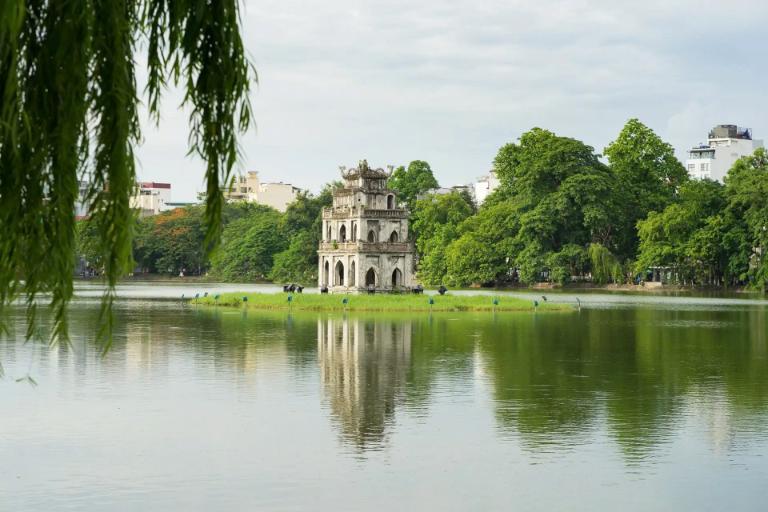
The Old Hanoi Quarter
Discover the lively Old Quarter of Hanoi, with its small lanes, vivid markets, and ancient buildings. From Hang Bac (Silver Street) to Hang Gai (Silk Street), every street is named for the items typically offered there. Search neighborhood restaurants to get real Vietnamese cuisine including pho and banh mi. Unique stores, galleries, and Dong Xuan Market abound in the Old Quarter as well, which makes it a vibrant area for meandering and shopping.
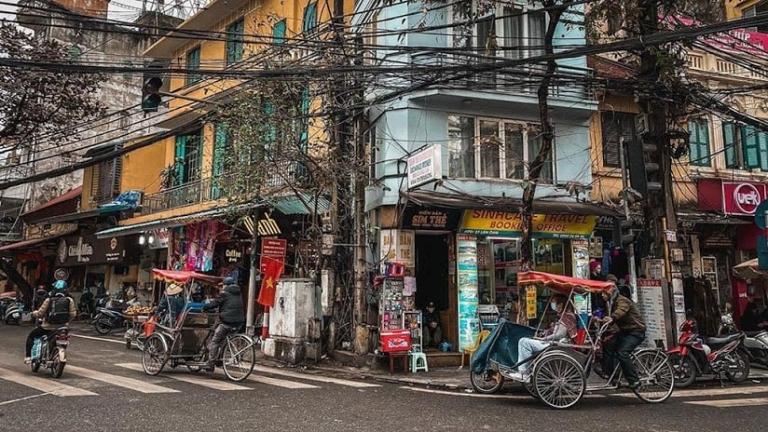
>>> Explore the Rich History and Culture of Hang Bac Street in Hanoi
Opera House of Hanoi
Inspired by Paris’s Palais Garnier, the architectural masterpiece the Hanoi Opera House is just twenty minutes’ walk from the theatre. Designed starting in 1911, it features ballet and opera among other events. The beautiful front and inside are worth appreciating even if you miss a concert.
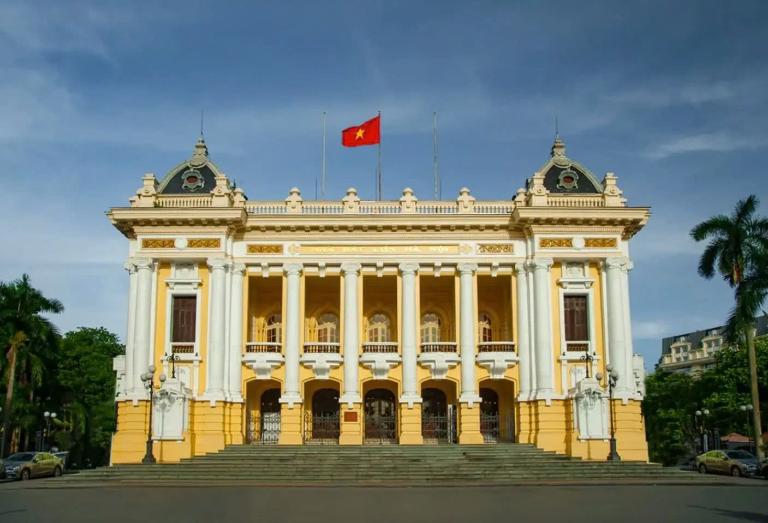
St. Joseph’s Church Cathedral
St. Joseph’s Cathedral, among Hanoi’s oldest churches, is a neo-Gothic masterpiece about ten minutes from the theater. Perfect for a leisurely stop, enjoy its great façade and the neighboring boutiques and cafés in the cathedral quarter.
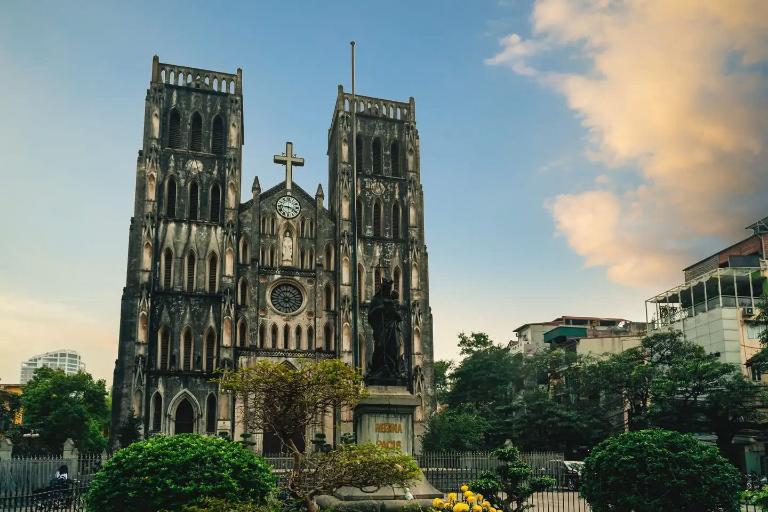
The museum of Vietnamese women
Not far by distance, the Vietnamese Women’s Museum highlights the important part women have performed in Vietnamese history. This museum provides insightful analysis of Vietnamese culture with displays spanning anything from traditional practices to tales of female rebels.
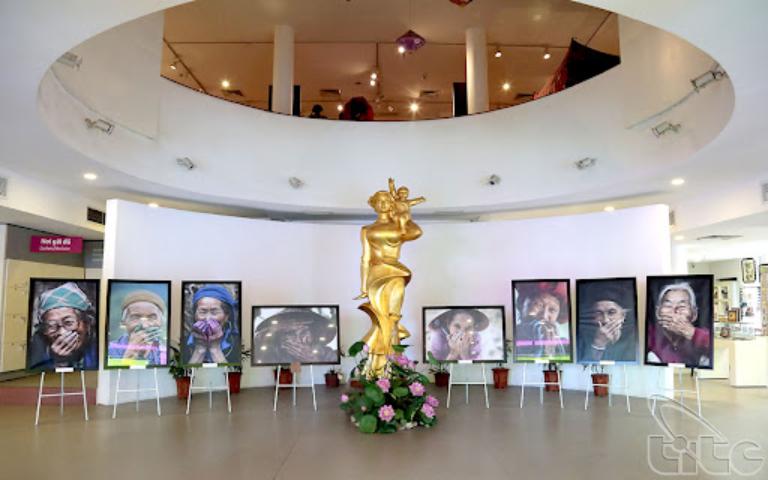
Visiting Thang Long Water Puppet Theatre
Location and Travel Guide
Right beside Hoan Kiem Lake, Thang Long Water Puppet Theatre is ideally situated in central Hanoi. From any main point in the city, walking or a taxi will get you here easily. Travelers staying in the Old Quarter will find the address to be 57B Dinh Tien Hoang Street, Hoan Kiem District.
In addition, to enhance your experience, you can choose guided tours like Hanoi Motorbike Tours. They will provide a comprehensive overview of Thang Long Water Puppet Theatre’s history and significance

Ticket costs and showtimes
Depending on the seating, ticket rates at the theater are rather affordable, usually between 100,000 and 200,000 VND (about $4.50 to $9.00 USD). Usually running many times a day, shows last roughly fifty minutes. Booking your tickets in advance is advised, particularly during the busiest travel season since the shows usually sell out fast.
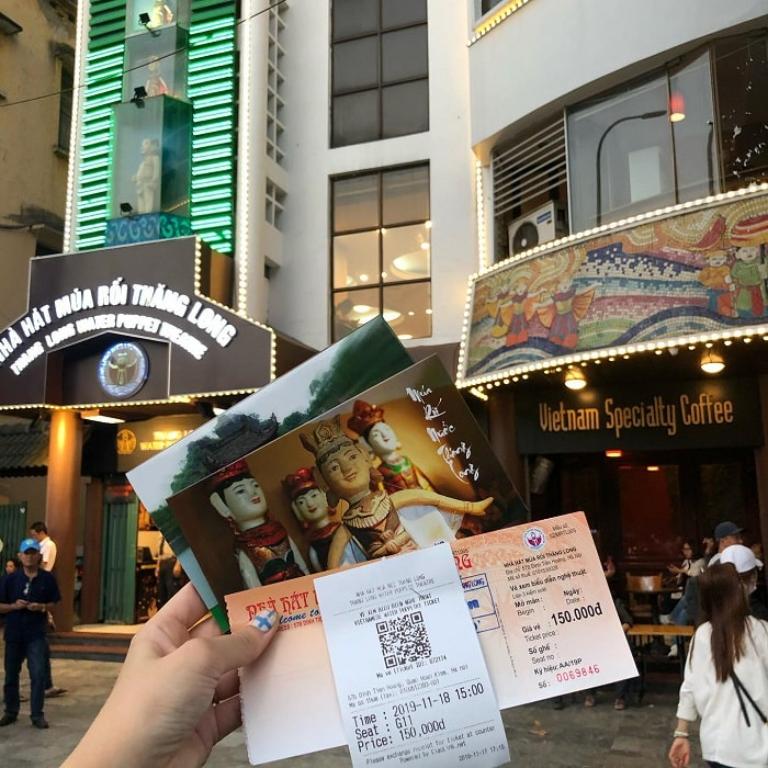
Best Time to See the Theatre
Although the theater is open all year round, the best time to come is in October through March during cooler months. This time of year not only brings more beautiful weather but also less visitors, which increases your chances of finding good show seating.
Advice for First-Time Visitors
Choosing Their Seating
Seating can significantly affect your experience at Thang Long Water Puppet Theatre. Front, center, and rear are three primary seating areas in the theater. Try to secure seats in the middle rows for the best perspective since they offer a great viewing position free from too close proximity to the water stage.
Realizing the Language Obstacle
Although the performances are in Vietnamese, the tale is mostly visual, hence the language barrier is not very important to worry about. English-language programs, which help to explain the stories and characters in every show, are typically accessible for individuals who want to grasp the conversation, too.

Thang Long Water Puppet Theatre offers a glimpse into the soul of Vietnam’s cultural and historical legacy, not only a venue to see a show. From its historical beginnings in the rice fields to its contemporary presentations right in the middle of Hanoi, the theater never fails to captivate and teach audiences from all around.
Related Posts:
- Exploring Hanoi Railway Station: Your Gateway to Vietnam
- Discovering the French Quarter Hanoi: A Cultural Journey
- Van Phuc Silk Village in Hanoi: A Guide to Vietnam’s Silk Craft
- Bao Son Paradise in Hanoi – Ultimate Guide to Hanoi’s Top Amusement Park
- Discover the Bat Trang Pottery Museum: A Cultural Gem Near Hanoi


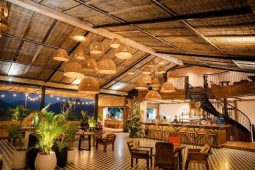


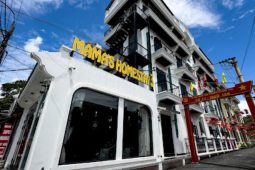

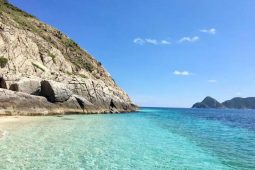

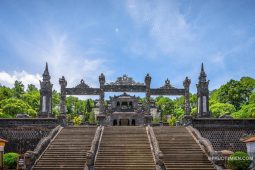
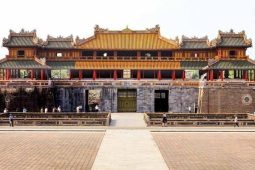


Be the first to comment!